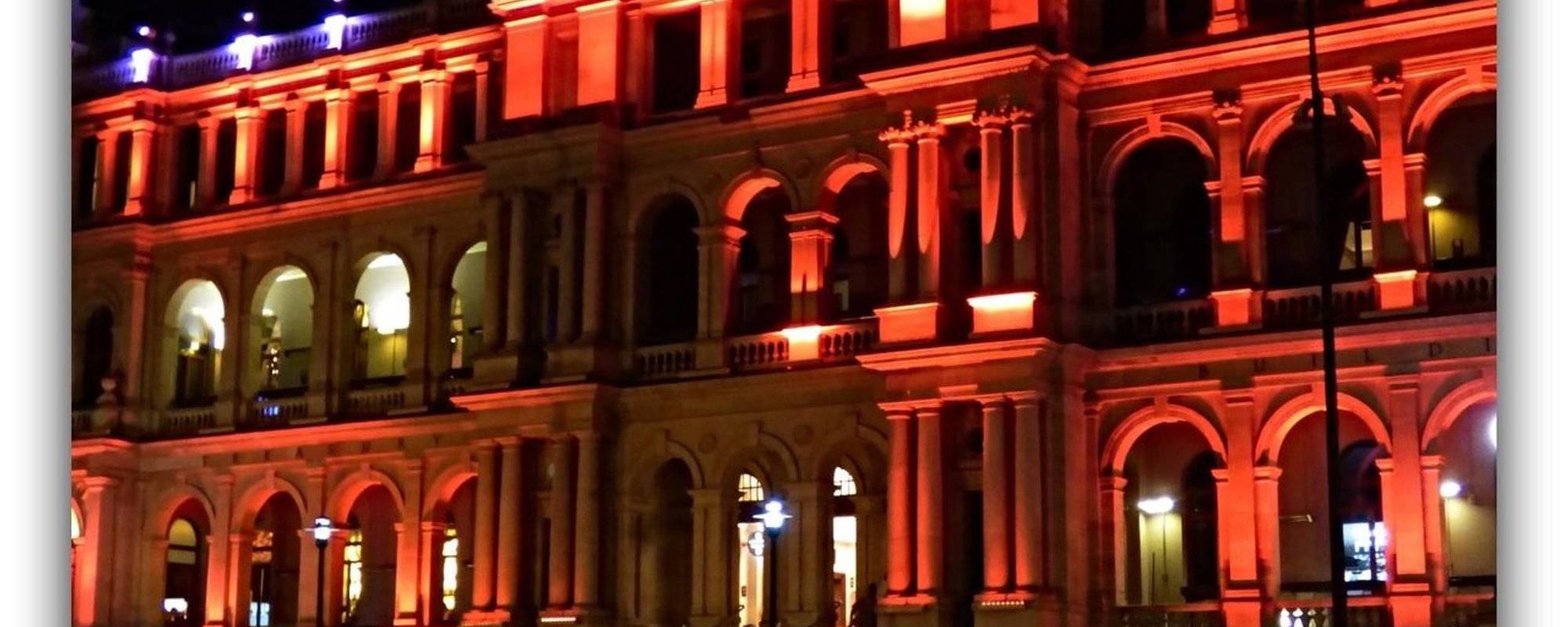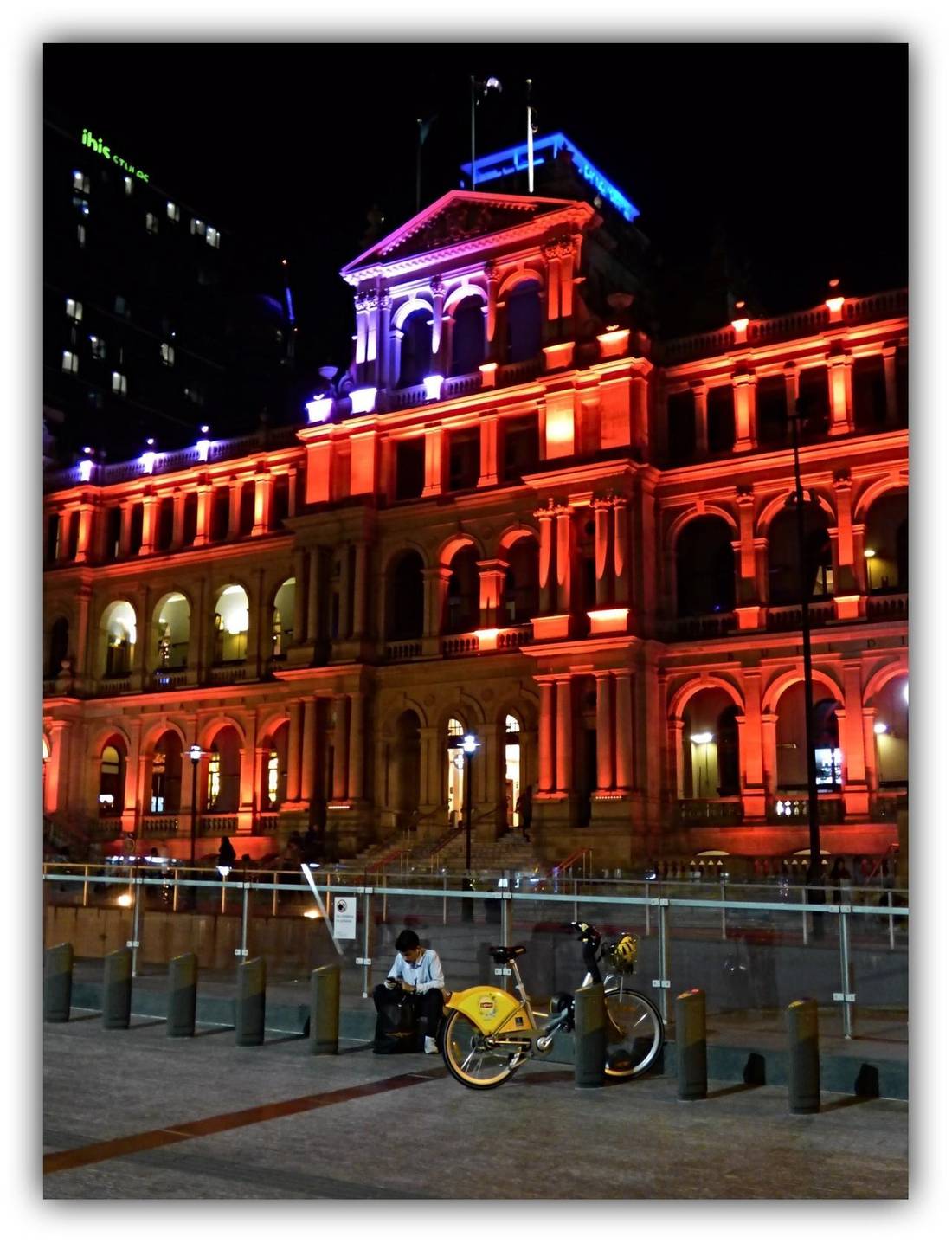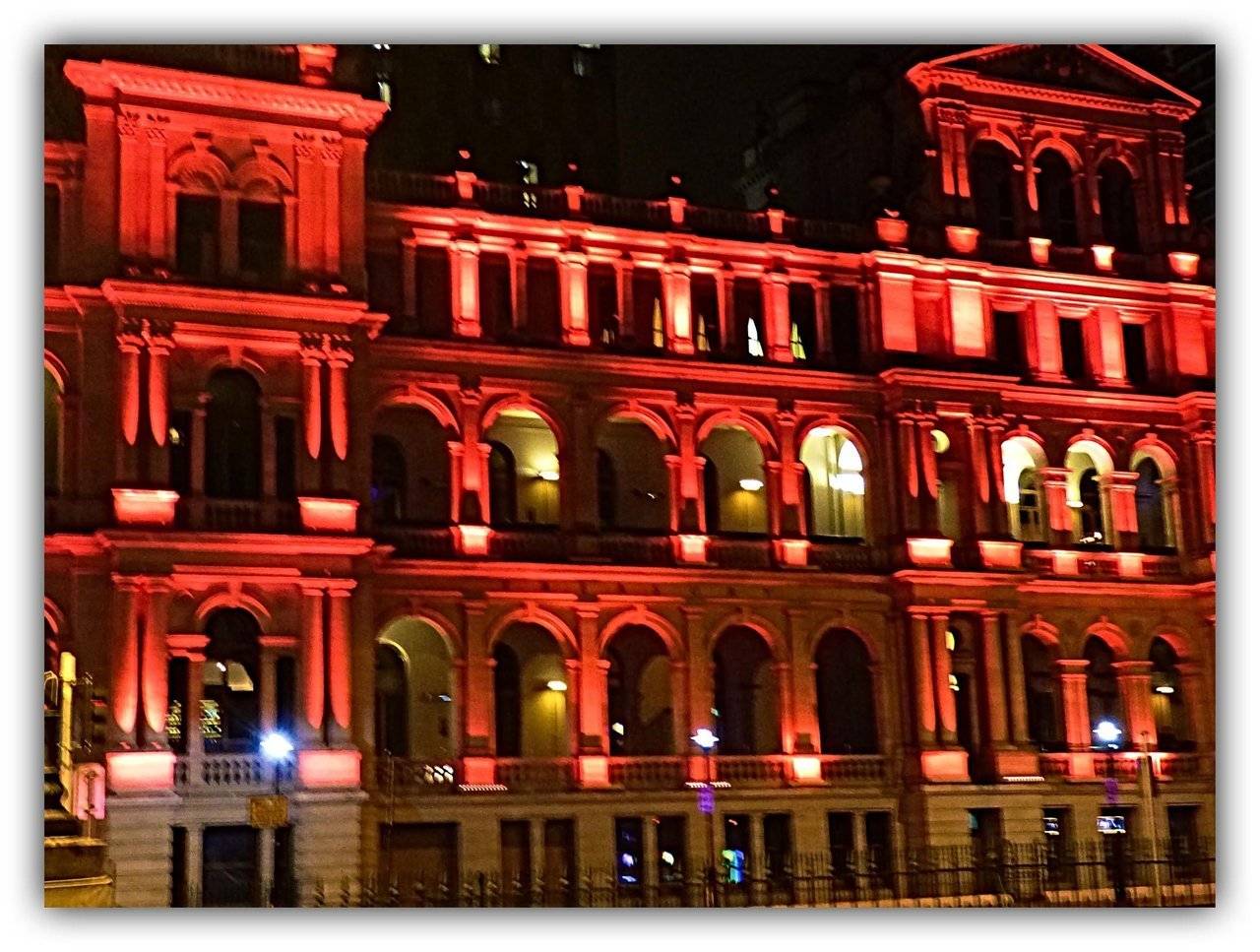“Stage One, which fronts William St and the river, was constructed from Highfields stone and completed by September 1889, to a design inspired by 16th century classical Italian architecture. Barely had the last of the tools been put down when the Premier, Registrar-General, Colonial Secretary and Treasury had moved in along with a motley assortment of departments such as Mines, Auditor-General and so on.
Stage Two, flanking Elizabeth St and part of George St (and facing Queens Park), was begun immediately upon completion of Stage One, under the continued supervision of Thomas Pye, who oversaw an efficient works program which finished at the start of 1893. This time Helidon sandstone was used and close inspection of the two wings shows up the discernible difference of materials. Then another flurry of government offices including Justice, Works and the State Savings bank (with purpose-built internal chamber) moved in, further centralizing the public service.
Such was the public pride in their self-government the building had quickly become a symbol of it, culminating in large public turn-outs at various occasions. The most significant of these was the reading of the proclamation of the Australian Government from a balcony on the William St façade on Federation Day 1901.
The action died down for a while until 1922, when the third stage, still faithful to the JJ Clark plans but made of Helidon sandstone and with a 1920s twist, was implemented. The old Registrar-General’s building from 1874 was demolished for this purpose and this final wing opened in 1930.”







